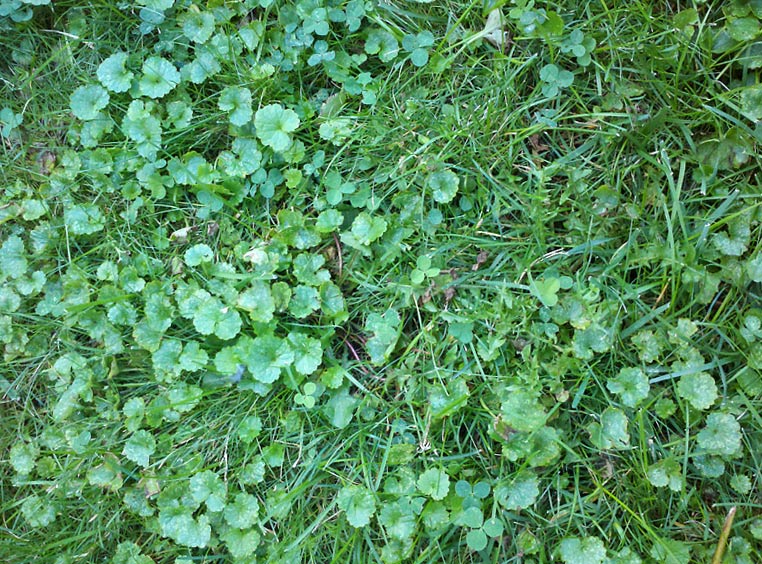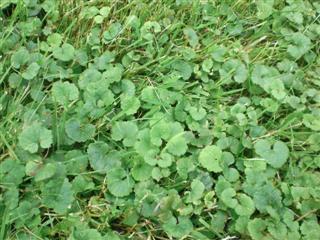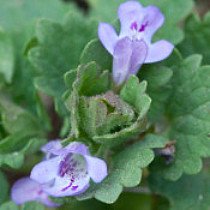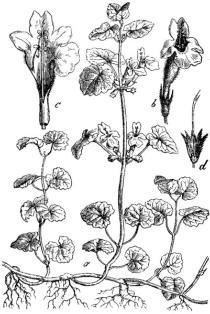Creeping Charlie has a minty smell when mowed or crushed. It is edible – some enjoy it in salads – and used in alternative medicines.
Found in lawns throughout the United States. It grows well in shady areas and thrives in cool weather. In some parts of the Midwest, it is considered to be the most common and difficult lawn weed to control.
It is a spreading perennial that is often misidentified as Common Mallow and Henbit.

What we cover
ToggleGround Ivy Identification & Control Tips
How to identify and manage Ground Ivy (Glechoma hederacea) often called Creeping Charlie, a very aggressive lawn weed that is difficult to control when established in lawns. Photos are included to help with weed ID.
It has low-growing, creeping stems that form new plants where they root at the nodes. This creeping/spreading nature along with its liking shady places makes it very competitive in lawns.
Ground Ivy Weed Control Measures
Natural control
The best way to control Ground Ivy is a thick, healthy lawn. For this weed to spread the seeds need to come in contact with the ground and have direct light, but keeping your lawn long and thick prevents this cycle from repeating.
Ground ivy prefers a moist, shady area with low fertility to grow.

Hand Weeding
This is a very difficult weed to pull because it roots along the nodes…breaking off and then re-growing. Creeping Charlie usually wins this battle.
Chemical Control
The best time to control creeping charlie with a broadleaf herbicide is fall and in the spring – when it is flowering. Combination products of 2,4-D, dicamba and MCPP/MCPA work better than 2,4-D alone. Triclopyr-based products are even more effective than 2,4-D products.
Characteristics:
- Winter perennial
- Bright green, round, kidney-shaped leaves on long petioles with round scalloped edges
Square, creeping stems that root at nodes - Bluish-purple flowers
- Fibrous root system
- Has a minty smell when mowed
Weed Images


Ground Ivy Weed Identification Description
Leaves – Arranged opposite along the stem on long petioles, round to kidney-shaped. They are dark green and sometimes tinted purple. The leaf margins have large rounded teeth.
Stems – Square stems that root at the nodes.
Roots – Fibrous root system.
The blue to violet flowers appear in May. They occur in clusters of three and are 3/8 to 5/16 inch long.
You might like these common lawn weeds
Corn Speedwell | Veronica Arvensis | Lawn Weed Identification
Corn Speedwell (Veronica arvensis) is a low-growing winter annual and a common weed problem in thin turf stands and newly seeded lawns. Pictures to help with lawn weed identification and control.
Mouse-Ear Chickweed | Lawn Weed ID & Control
Mouse-ear chickweed is a common lawn weed found throughout the United States. Its characteristics make it a competitive weed in lawns.
Common Chickweed | Lawn Weed Identification and Control
How to identify and manage Common Chickweed (Stellaria media), a winter annual lawn weed. Photos are included to help with weed ID and control. Lawn care tips and advice.
